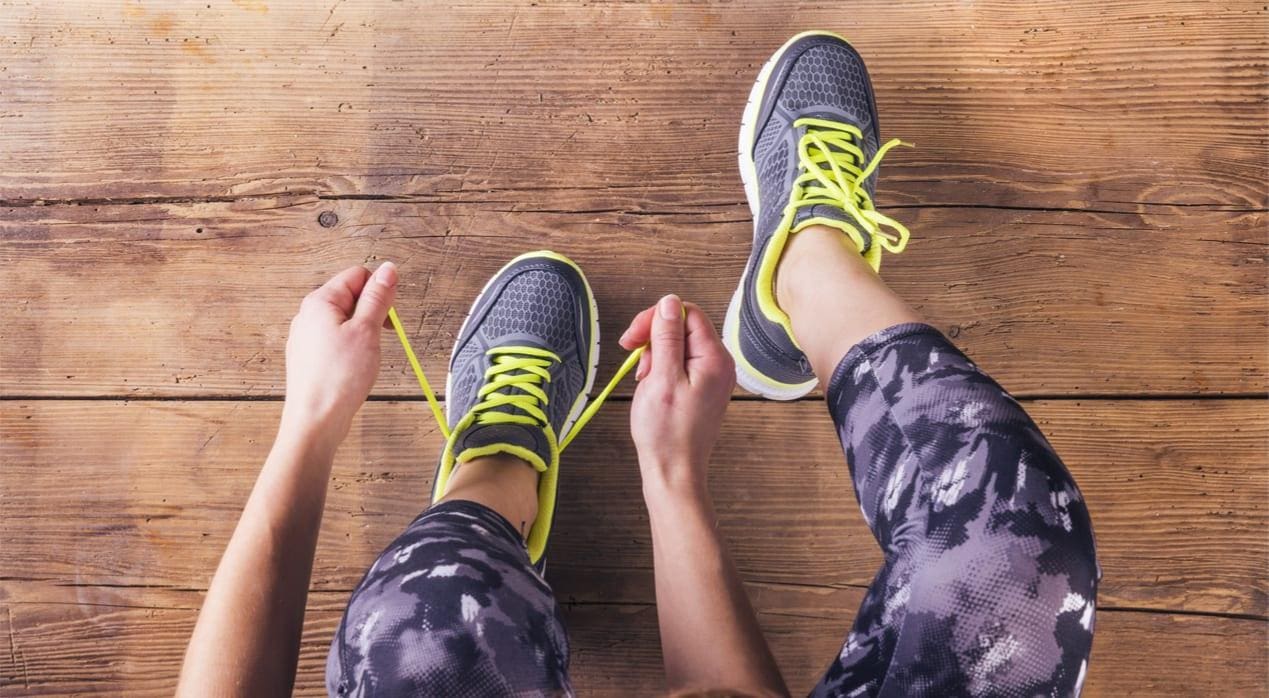You wouldn’t build your house on a swamp, and you don’t want to exercise while wearing heels. The high heels, ballet shoes and sandals are just fine when you’re being fashionable, but when you’re working out the shoes you wear make a huge difference. The shoes on your feet can protect you from injury, but they’ll also help you maintain good form to perform exercises the right way. Without good shoes, your exercise routine isn’t going to be as effective.
What Type of Feet Do You Have?
Everyone’s feet are a little bit different, and that’s why one pair of shoes won’t work for everyone. Do you have high arches? Low arches? Staring at your foot may not tell you the answer, but there is a simple way to find out.
Get the bottom of your foot wet and step on a piece of dark paper. If you can see your entire sole on the paper, you have lower arches or even flat feet. Your feet need plenty of support, so look for footwear with heel cushioning.
If you can see very little of your wet footprint on the paper, you have higher arches. This means your feet are more likely to roll slightly outward, the opposite of flatter feet that tend to roll inward. Look for shoes with a soft midsole section. This will give support to your high arches, preventing foot strain around the middle of your foot that can lead to leg and even hip pain.
You might have a more “neutral” foot with neither high nor low arches. If you can see a distinct outline of your foot, with a clear curve along the inside of the step, you probably have a more neutral arch. Choose shoes that have uniform cushioning throughout to give support to your entire foot while you exercise.
How Do You Exercise?
The type of shoes you choose depend on the type of workout you do the most often. Are you a runner? Running and walking put a lot of force on your feet, so look for shoes that have cushioning in the heel and forefoot areas. Your shoes should also have good flexibility to allow for natural foot movements. Check the toes of your shoes to see how well they bend and twist. You don’t want stiff shoes that will keep your feet rigid, as this can lead to pain and injury.
Experts recommend getting separate shoes for walking and running. Your running shoes should have more cushioning to absorb impact. You can also opt for minimalist, streamlined shoe designs for running.
If you lift weights and focus on strength-training, you want shoes that are a little less flexible. Stable feet are required for safe lifting and strengthening efforts. Look for a cross-trainer. These shoes are usually designed with slightly stiffer soles than running shoes to provide a stable base.
Buying Good Workout Shoes
When you’re looking for the right workout shoes, shop toward the end of the day. Your feet will be more swollen at the end of the day, and that’s what you want to make sure you get shoes that will fit your feet at all times. You also want to get your feet measured so you can be sure you have the right size. The workout shoes you wear might not be the same size as your heels.
Your shoes should fit comfortably everywhere. Athletic shoes don’t need to be “broken in.” Get a pair of shoes that feel great and fit great, and you’ll get shoes that you can exercise in safely and effectively.






